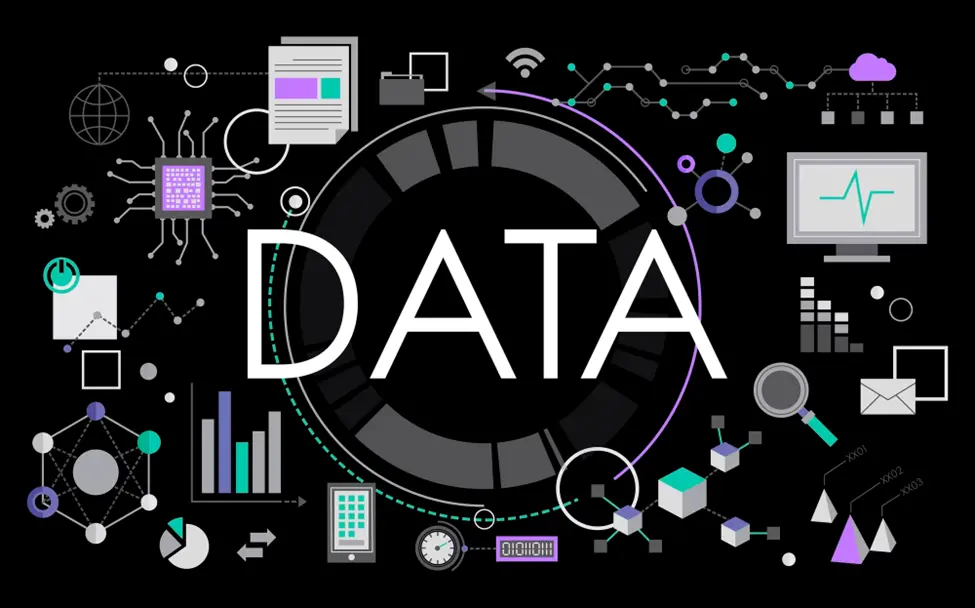Moving data may feel like a simple copy-and-paste operation. But when it comes to bringing millions or even billions of data points to a fresh system, that’s where the complexity of data migration escalates dramatically.
Still, many businesses treat this massive data transition as a two-click task. As a result — additional hours, inflated costs, and disrupted schedules. For example, the survey revealed that only 36% of migration projects stayed within the set budget, while only 46% were delivered timely.
So, how can you sidestep these pitfalls? The answer lies in understanding the data migration process. Read on to learn the steps you should take to make your migration a success.
What is data migration?
You might be wondering, what does migrated mean in the context of data? Essentially, when data is “migrated,” it is strategically moved from its original environment to a new one. This could be from an old database to a new one, from a local storage system to the cloud, or even from one format to another.
The definition for migrating data doesn’t merely involve a simplistic copying of information. The process entails data preparation, extraction, and transformation. But more on this in the next sections.
Types of data migration
No matter what drives your business to move data to a new place. Whether it’s legacy software refactoring, upgrade of an existing storage system, data center relocation, cloud migration, or more — this step is beneficial for your company as it improves efficiency, accessibility, and utility.
At the same time, data migration is not a one-size-fits-all process. It comes in various forms, each suited to specific situations and purposes. So, what are migrations types? We break down the most common ones below.
-
Storage migration
Here you move data from one storage device to another. You may want to take this step to upgrade to a new system with higher capacities, better performance, or advanced features.
-
Cloud migration
The process of migrating data to cloud involves moving data, applications, and other business elements from on-site storage systems to the cloud, or from one cloud service provider to another.
-
Application migration
As for this type of migration, here you move an entire app from one environment to another. This could be from a local server to the cloud, or from an on-premises data center to a virtual one.
-
Business process migration
This type of migration is not just about data, but also about the underlying business workflows. So, what is migrated here? You move a set of processes from one platform to another.
-
Data center migration
This is a large-scale migration of databases that involves moving an entire data center to a new location. This could be driven by various factors such as cost reduction, facility upgrades, or business expansion.

Planning data migration
The absence of robust planning is a significant contributor to the failure of data migration projects. Approximately 44% of Chief Information Officers (CIOs) find it challenging to define migration scope and orchestrate the necessary steps in advance. When viewed through this lens, proper planning holds the entire migration process together, minimizing the risks of data loss, extended downtime, or budget overruns. But what does this process involve? Let’s take a closer look.
- Define clear objectives for the migration. This could be anything from improving system performance to streamlining workflows or complying with new regulatory requirements.
- Scope the migration. Identify the data you want to migrate, understand its nature and structure, and estimate its volume. Also, determine the source and target systems, and study the technical requirements of each.
- Develop a detailed migration plan. Outline the step-by-step process of the migration like the tasks to perform, the roles and responsibilities of each team member, the timeline, and the budget.
- Back up data. This step ensures that in the event of any unforeseen mishap during the migration, your vital information remains secure and retrievable.
- Assess the risks. Define potential risks and obstacles that could arise during the migration and develop contingency plans to manage them.
- Run a pilot migration. As you migrate user data or any other information in a test mode, you may identify any issues that might not have been apparent during the planning phase. This allows you to fine-tune the migration process to get the desired outcomes.
Three steps of data migration
The migration itself is traditionally segmented into three fundamental stages: data extraction, transformation, and loading. This process is also known as ETL.
Extraction
During extraction, you identify and retrieve data from the source system. There are a few things to consider during this stage:
- Ensure the information remains integral.
- Extract data in a way that minimally impacts the performance of the source system, especially if you need to keep it operational during the implementation of your data migration project.
Transformation
If you want data to align with the structure or format of the target system, you’ll need to transform or parse it. Depending on the information condition, this process may involve different steps:
- Cleaning and validating to ensure its quality.
- Reformatting and restructuring to match the requirements of the target system.
Loading
The final step of the data migration process is loading the transformed data into the target system. Here make sure all data is accurately and completely transferred. When it is loaded, verify the integrity and completeness of the information.

Best practices for data migration
Moving data isn’t just a technical process — it’s a strategic business move. As you follow effective data migration methodologies, you ensure your migration project is successful and delivers the desired business outcomes. Understand your data. Get an idea about the information structure, format, interdependencies, and quality. Then think of who is going to use it in the future and in what way. Set clear, measurable goals. Whether it’s improving performance, reducing costs, or achieving regulatory compliance, make sure you know how to estimate the success of the migration process through well-defined parameters. If you have no clue how to set goals, you can check successful migration example documentation. Test and validate. After each stage of the migration, test and validate your data to ensure its integrity and accuracy. This helps catch issues early, so you can address them before they cause bigger problems. Assemble a professional team. If you don’t have an in-house team that is aware of how to do data migration, it’s better to outsource this service from a company with a solid track record. Back up data. You can’t afford to lose information in case something goes wrong. Make sure you have reliable backup resources you can use to restore lost information in the event of failure.
Data migration risks
While you plan to migrate information, there are risks that something may go wrong. As you know the challenges you might encounter, you can build data migration strategies with the steps taken to overcome those hurdles.
Data losses. This can happen due to many reasons — technical errors, compatibility issues between the source and target systems, or even human error.
Data corruption. Information could get corrupted or altered, leading to inaccurate or incomplete data in the target system.
Extended downtime. While you often expect some degree of downtime during migration, unexpected complications can lead to extended periods of outage, disrupting business operations and impacting productivity.
Cost overruns. If you make misestimations or unforeseen difficulties occur, this may lead to higher than anticipated costs. This might happen as the result of expended timelines, additional resources, or the need for additional equipment or services.
Compliance issues. Moving information in a highly-regulated industry could lead to non-compliance with data protection laws and regulations. In its turn, your company may suffer from hefty fines and reputational damage.

Conclusion
A successful data migration solution unlocks transformative opportunities for your business. However, it comes with its share of challenges — potential data loss, corruption, unexpected downtime, and even compliance issues. Hence, you should also be aware of how to effectively overcome those risks to succeed. And if you don’t have enough in-house resources to move information safely, data migration as a service is your solution to go.
At Nannostomus, we specialize in data scraping, wrangling, and migration. Our seasoned team is armed with a deep comprehension of data and a suite of powerful tools to handle migration projects of all sizes. We work diligently to ensure a smooth transition — with minimal operational disruption and maximum efficiency.
Contact us today to get to know how Nannostomus will help you get the desired migration outcomes.




